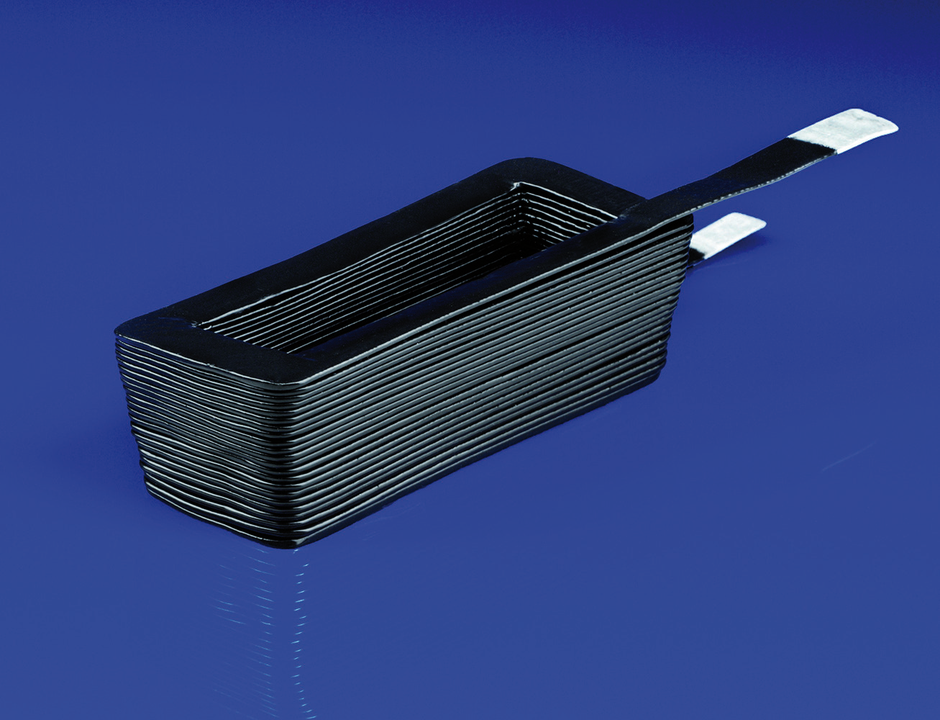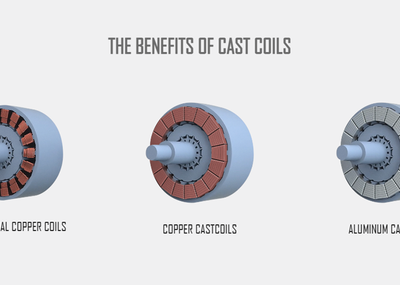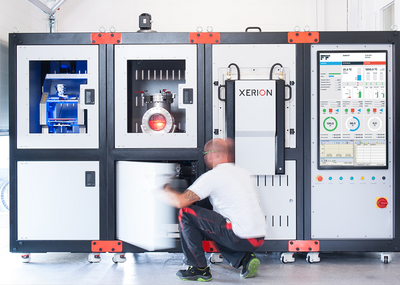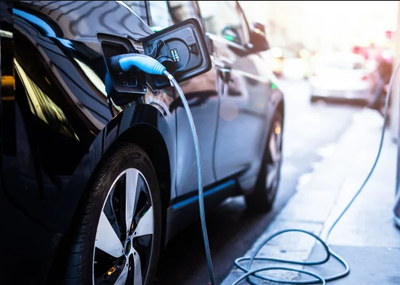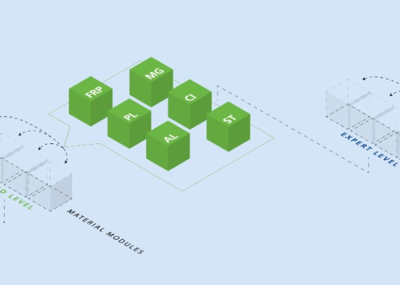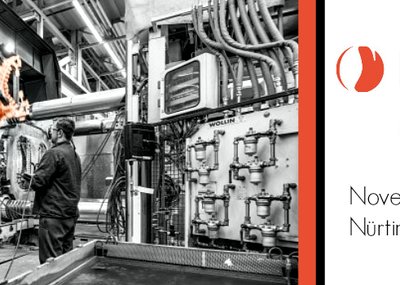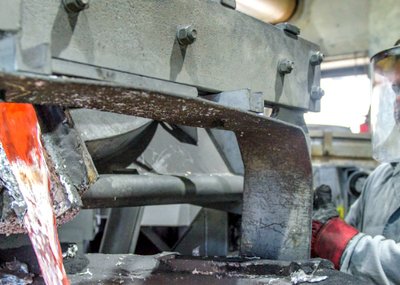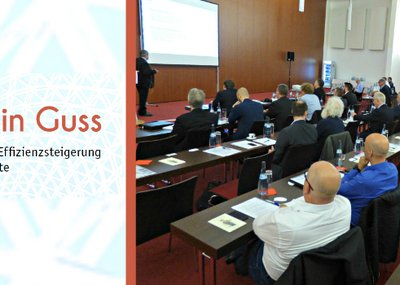A wide range of requirements are made on the windings of electric motors. On the one hand, the optimal use must be made of the available installation space by using a high slot-filling ratio. On the other hand, the best possible cooling of the conductors must be assured, and additional efficiency reductions caused by a current displacement should be avoided. Moreover, production and assembly of the coil should be cost-effective and automatable.
Fraunhofer IFAM has developed a method that allows coils for electric motors to be produced by casting. The coil geometries produced, which use a flat conductor arrangement (Fig. 1), offer significant benefits in all the above-mentioned aspects compared with conventionally produced windings.
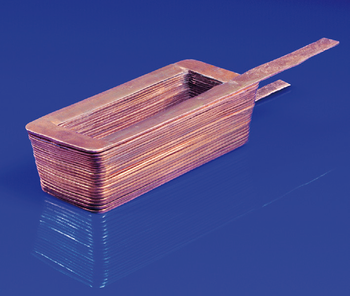
Fig. 1 - Cast copper coil for a wheel hub motor.
Filling factors of up to 90 per cent
The geometric degrees of freedom that production by casting offers enable the conductor cross-section to be specifically adapted to the installation space available. The complete utilization of the slot cross-section of electric motors allows filling factors of up to 90 per cent to be achieved (Fig. 2). Another advantage of this method of production is that the bending radii at the winding head, necessary in wound coils, can be eliminated, allowing conductor length and axial installation space to be reduced. Consequently, electric resistance is reduced by up to 50 per cent compared with that of a wound coil in the same installation space.
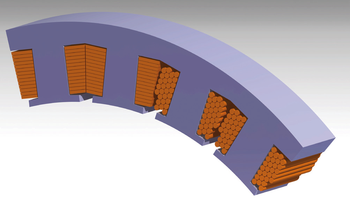
Fig 2. - Cross-section of cast coils (left), compared with wound coils (right).
Ideal thermal and electromagnetic properties
Apart from the high filling factor, the flat conductor arrangement offers furtheradvantages from an electromagnetic and thermal point of view. Compared with a wound wire with the same cross-sectional
area, thermal behavior is significantly improved while the negative influence of the skin effect is minimized. This allows continuous current densities of between 18 and 24 A/mm² to be achieved, depending on
the coil size (Fig. 3). As a result, the current density in the slot can be tripled compared with that of conventionally produced coils.
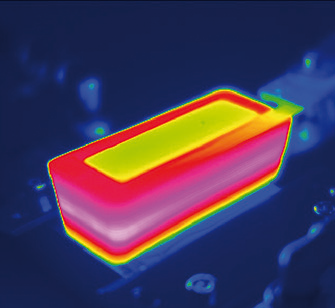
Fig. 3 - Temperature distribution in a cast coil with a current density of 18 A/mm² analogous with 12 A/mm² in a conventional winding.
Wide range of potential applications
The combination of a high filling factor, excellent thermal behavior and low skin-effect losses can be utilized in a number of ways in the motor design. For example, efficiency as well as torque and power density can
be significantly improved, with a reduced material input. The increase in the slot-filling factor also allows aluminum to be used as a conductor material (Fig. 4), thus compensating for the electrical conductivity disadvantage.
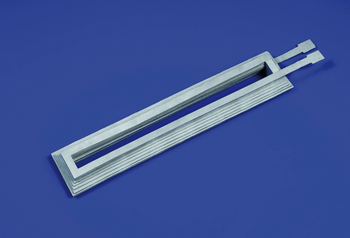
Fig. 4 - Cast aluminum coil.
Further potential applications can be exploited if the degrees of geometric design freedom are used for the development of innovative cooling concepts. A localized increase in the conductor cross-section in
areas subject to high thermal load (e. g. at the winding head) can help avoid the occurrence of thermal hotspots, or axial cooling ducts can be provided in the conductors to achieve an optimal cooling effect with a large heat exchange surface area.
Flexible production with different casting methods
As various casting methods for the production of coils are available at Fraunhofer IFAM, coils can be produced in a variety of different sizes and quantities. In precision casting, low conductor heights (> 0.7 mm)
can be achieved with coil lengths of up to 200 mm, while coils produced using the lost foam method can have edge lengths of up to one meter.
For large quantities, production of the coils in permanent molds results in the lowest unit costs. For the production of prototypes, a precision casting process chain is available that allows the creation of a coil geometry in hardware in a minimum of time.
Customized insulation coating
Various technologies are available for the insulation coating, and customized solutions can be developed in order to satisfy customers‘ electrical and thermal demands. The optimization goals here lie in ensuring
insulation strength, minimizing coating thickness and increasing resistance to heat and aging. For example, the aluminum coil shown in figure 5 was coated with an epoxy resin-based powder lacquer system.
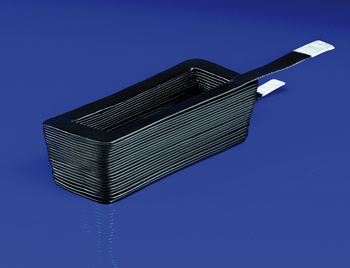
Fig. 5 - Powder-coated aluminum coil.
Extensive analysis methods are available for the characterization of coatings with respect to insulation strength, coating thickness and heat resistance.
Summary
The production of coils by casting offers a significant improvement in the power density of electric motors while at the same time reducing production costs. The advantages of this process is the achievability variable
cross-sectional geometries using a constant cross-sectional area that enables us to attain slot-filling factors of up to 90 per cent.
Our offer:
- Electromagnetic simulation and coil geometry design
- Production and coating of prototype series
- Fundamental process development for cast coils
- Development, production and testing of electric motors with cast coils
- Conducting of profitability studies
- Advice on the establishment of pilot series

